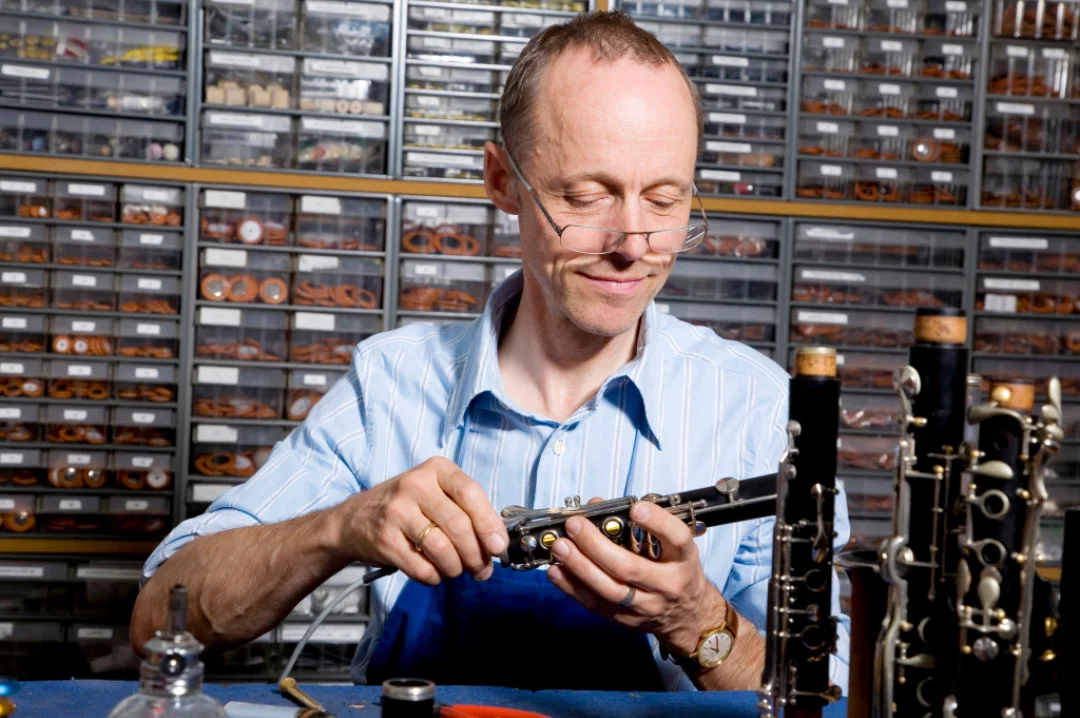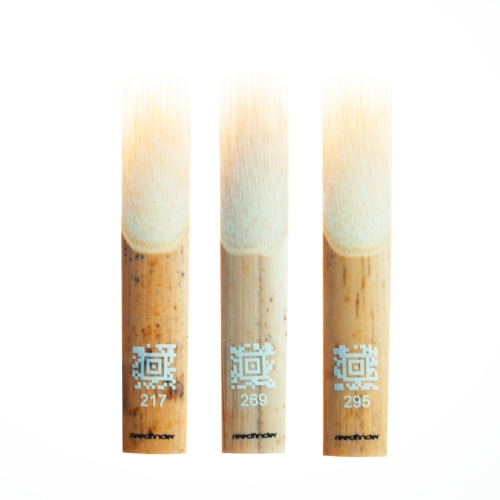Your Wind Instrument Won't Stay in Tune. Here is How to Fix!
Struggling to hit the right notes? Your instrument might be the culprit! Learn how to fix intonation problems and stay in-tune.
Imagine playing a beautiful symphony. Suddenly, the harmony is disrupted by your rogue out-of-tune note. It's a familiar scenario to all musicians, and one that often leaves us scratching our heads, wondering, "What went wrong?"
In the world of acoustic instruments, where reeds, temperature and many other factors have an effect on the pitch, achieving consistent and accurate intonation can be challenging. This article will help you understand tuning and intonation better, enabling you to handle these uncomfortable situations.
What is Tuning?
Tuning refers to the process of adjusting the instrument's components. There are adjustments which can be made by the musician, like adjusting the length of the instrument or changing the reed placement. There are also adjustments which can be done by a professional repair technician (undercutting tone holes, implementing extra vents, changing pad height etc.)
These corrections have only one goal: to get your instrument’s pitch as close to the equal temperament as possible.
That means, if you have a perfectly tuned instrument, you would get “0 cent” for every note on a chromatic tuner.
- Does it mean that I will be in-tune every time playing in an ensemble?
- No! Because we still need to talk about intonation.
What is Intonation?
Intonation focuses on finding the right pitch within a musical context. Even if your chromatic tuner shows 0 cents for every note of your instrument, you can still be out-of-tune. Here is why:
- oh, and click here to skip this music theory part
Pitch is determined by the speed of vibration of the sound wave. The number of vibrations per second (also known as frequency) is measured in hertz (Hz).
Each time a sound is made, a fundamental tone is produced which determines the frequency mentioned above. In addition to this, the sound has additional overtones (partials), which can be harmonic or inharmonic.
The timbre that allows us to distinguish whether we are hearing a bassoon or a clarinet is determined by the proportion and intensity of these partials.
In instruments where pitch variation is possible, harmonic overtones are mainly present. The frequency of these harmonic partials is an integer multiple of the frequency of the fundamental. The figure below shows a harmonic overtone system built for C.
As illustrated in the figure, the intervals between various partials can be determined by analyzing the ratios of their frequencies.
For instance, comparing the frequencies of the first and second partials reveals the octave, where the ratio between the two frequencies is 1:2.
Similarly, the ratio between the second and third partials determines the perfect fifth, with a ratio of 2:3.
This underscores the significance of frequency ratios in defining musical intervals: the octave has a ratio of 2:1, the fifth 3:2, the fourth 4:3, and so forth.
Essentially, the purity of musical intervals is governed by these frequency ratios rather than the absolute differences in frequencies.
- Okay, but where is the catch?
- Well, just intonation gives us the purest intervals possible. But it has nothing to do with the equal temperament we use in western music.
- Wait, what? Why don’t we use the purest system to tune our instruments to?
- We can’t. Let me explain.
Imagine, you are a famous oboist, playing in a big concert hall. You already tuned your A note perfectly to 440 Hz. Now you have a whole symphonic orchestra behind you. You take a look at your score and you see this:
You only have to hold your perfectly tuned “A” until the end of the piece. Easy, right?
Now, listen to your audio recording to check how you did:
- Well it started good but... you went out-of tune in the second bar. Here is what happened.
When the orchestra plays in A Major, you have a well-tuned A note. That's great. However as you go into the second bar, the tonality changes to F Major. Which role has your A now? It is the major third in F Major.
- And?
Remember how we calculated the purest intervals based on pure intonation. We had the 5:4 ratio. Based on the frequency of F (349.23 Hz), the frequency of our A note is now 436.54 Hz. An adjustment of -14 cents is required to stay in tune.
- Should I lower my "A" only in the second bar by 14 cents to bring it in-tune?
- Absolutely!
Let’s listen, how you did the second time:
- Congratulations, you nailed it!

The question is: should our A note be stable and more out of tune, or less out of tune but less stable? It depends on the music, the tempo, the audience, the instrumentation and many, many other factors.
Factors Affecting the Pitch of Wind Instruments
There are 4 factors affecting the pitch of your instrument and only one of them is you.
- The Air (temperature, humidity)
- Your Instruments Build (Design, Materials, Construction)
- Your chosen Equipment (Mouthpieces, Reeds, Barrels, Bocals etc.)
- You
 (embouchure, finger placement, tongue position etc.)
(embouchure, finger placement, tongue position etc.)
Pitch Tendencies
Because of the factors mentioned, your instrument will have individual pitch tendencies. Some notes tend to be too flat, some of them are too sharp. Whether you play the clarinet, tuba, piccolo or the french horn, these tuning tendencies are like a fingerprint of your instrument.
How to Measure Pitch Tendencies?
You can make a tuning chart by playing every note on your instrument one by one and checking the chromatic tuner.
Here are the rules:
- Try not to compensate by using your ear and/or your eyes.
- Note that the beginning of the notes will be much higher because of the rapid change in the ratio of exhaled CO2:O2. (learn more)
- You should wait a couple seconds before reading the tuner.
- Don’t change your embouchure, don’t adjust your reed, make sure that the temperature and humidity don't change throughout the test.
- Play every note at least 3 times and average the values you've seen. That way you can be way more accurate.
At the end, here is how your chart will look like for one specific setup after 1 hour of work:
![]() I did this a lot. You don’t have to. Here is why:
I did this a lot. You don’t have to. Here is why:
Tuning Charts
Tuning Charts uses artificial intelligence to analyze pitch tendencies, offering you a tool that is capable of comparing different instruments and equipment within seconds.
![]() Here is how you can analyze your own pitch tendencies in under a minute.
Here is how you can analyze your own pitch tendencies in under a minute.
Sign-up to Tuning Charts by clicking here and let’s set the stopper for 60 seconds
- Go to Record and play a fast chromatic scale (still 50 seconds left)
- Tuning Charts AI analyzes your pitch tendencies (still 30 seconds left)
- Select your equipment from the database (still 20 seconds left)
- Oh, it finished too early… take a sip of your coffee, because your chart is already generated.


Who is Tuning Charts for?

FOR MUSICIANS
Measuring intonation tendencies takes less than a minute, instead of half an hour.
Understand your setup better to be more in-tune.
Are you looking for a new instrument or mouthpiece? We help to choose the best one!
click here to start
FOR INSTRUMENT / EQUIPMENT MAKERS
Accelerate your product development with AI and save time in the testing process.
Statistical insights directly from musicians.
for example:
- Which reed is being used with a specific mouthpiece of yours?
- How does a specific barrel change the timbre?
- Which barrel gives you the best pitch tendencies for your specific instrument?

FOR REPAIR SERVICES
Precision repair strategies with pinpointed pitch tendencies and timbre characteristics.
Show your clients before and after results for the full range of the instrument.
click here to startDo you like this article?
Thanks for your feedback

World’s #1
Reed Recommendation System
We believe every musician deserves a reed that matches their unique style and sound. Each reed is selected with cutting-edge AI and machine learning based on your playing feedback.
Should You Try the Benz-Tec Digital Reed Tester? I've tested it for you!
Check out the best clarinet jokes to brighten your day!
Unleash the full potential of your clarinet with our exclusive care guide. Elevate your playing with tips that ensure your instrument remains in perfect condition.
Here are the top 7 picks of best applications to download for classical musicians. Tuners, Metronomes and more.
Buffet Crampon's latest innovation: the Prodige Pocket Clarinet. Is it really the best instrument for young clarinetists? Check out our review!
Discover the best clarinet mouthpieces! Check out our reviews and recommendations for Bb and Bass clarinet.
Learn the technique of circular breathing. Expert guide with step-by-step instructions and troubleshooting tips for continous breathing.
A groundbreaking innovation of Buffet Carmpon: Clarimate. This is our honest review about its innovative features and real-world performance. Is it for you?
Discover the role of clarinet ligatures in achieving optimal sound and control. Explore various ligature types, materials, and techniques to enhance your clarinet playing experience.
Discover the Vandoren VK1 clarinet reed, a breakthrough in synthetic reed technology. Experience stability, durability, and consistent performance.

